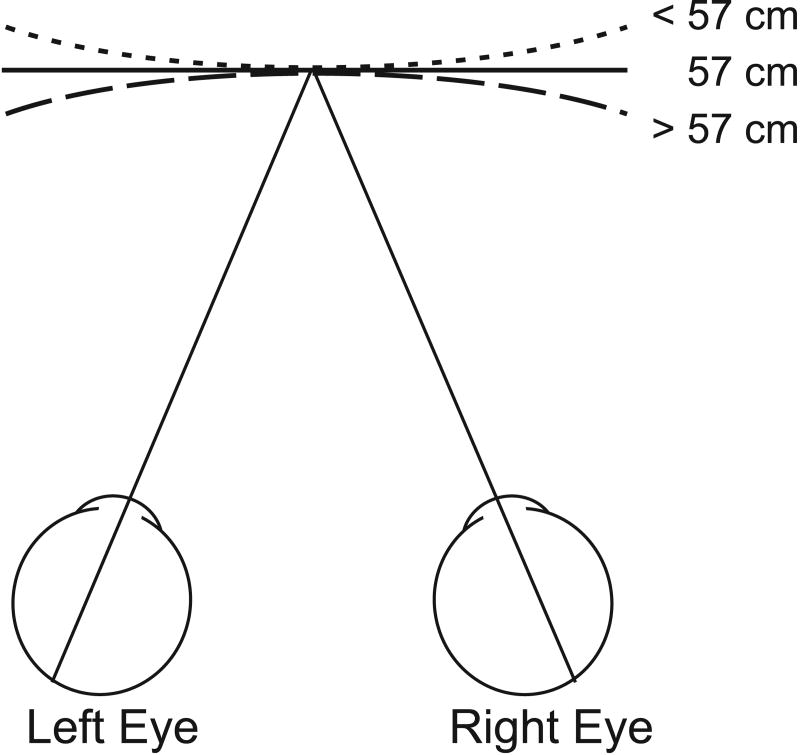Figure 7.
Schematic illustration of the viewing situation in the curvature discrimination task. The monkey views a full-field random-dot stereogram that is made to appear curved (convex or concave) by addition of a horizontal disparity gradient that simulates different viewing distances. Simulated distances < 57 cm appear convex (short-dashed curve), > 57 cm appear concave (long-dashed curve), and 57 cm appears flat (solid line). At the end of each trial, the monkey makes a saccade to one of two targets to report his percept as ‘concave’ or ‘convex’. After the monkey was fully trained to discriminate the sign of curvature based on horizontal disparities, cue conflict conditions were introduced in which a vertical disparity gradient simulating a discrepant viewing distance was added to the display on half of the trials.

